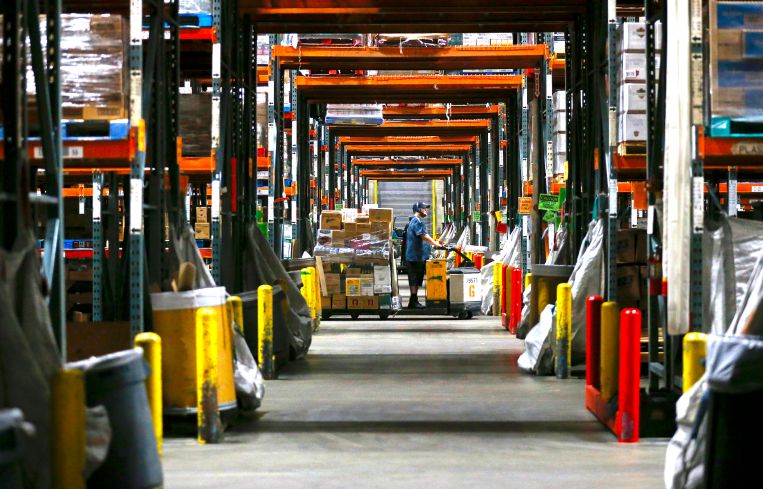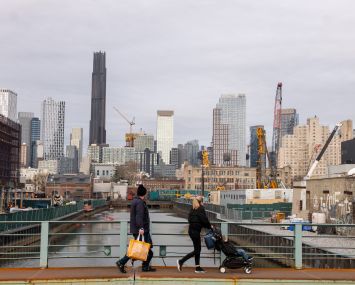US Warehouse Markets Cool: Sales Fell 30% in 2022
Inland Empire led the country in rent growth, with rents increasing 14.2 percent in 2022
By Greg Cornfield January 30, 2023 3:40 pm
reprints
Industrial rents are soaring around the United States and markets continue to tighten despite record levels of construction. But the out-of-control environment from 2020 through the first half of 2022 started to ease last summer and will “finally normalize” in 2023, according to a new report.
“This year we expect that the sector will cool somewhat but continue to expand and remain one of the more attractive asset classes in commercial real estate,” according to CommercialEdge’s latest national industrial report.
High interest rates and a looming recession will further slow leasing activity and restrict transaction volume as businesses pause expansion plans. The supply chain is also normalizing, meaning less need for large safety inventories, which became common the past couple of years. But, overcrowded ports will continue to drive demand in already tight port markets.
Investors closed $88.3 billion in industrial sales nationally in 2022, significantly below the whirlwind year in 2021 that saw a flurry of deals totaling $125.7 billion.
“Even as demand waned slightly the last third of the year, the appetite for these new, high-quality facilities was incredibly strong throughout 2022,” CommercialEdge’s Peter Kolaczynski said in a statement.
As evidence of the effect of higher interest rates in 2022, year-over-year sales volume was higher in the first half of 2022 than in 2021, but fell quickly in response to rate increases by the Federal Reserve, and the number of sales ended 30 percent below 2021’s total. Additionally, the average sales price of an industrial building has skyrocketed 59 percent in three years, from $83 per square foot in 2019 to $132 in 2022, further dissuading trades.
“We expect that sales volume will remain muted in 2023, but could quickly rebound once rate hikes stop and the market adjusts to the new environment,” the report predicted.
New industrial supply hit record levels in 2022 with 450 million square feet added in the 118 markets covered by CommercialEdge, led by Dallas, Indianapolis, Chicago, Phoenix and Southern California’s Inland Empire. And those numbers are expected to climb again in 2023.
But even with a record level of new development, it still wasn’t enough to keep up with demand. The average vacancy rate for the top 30 markets fell steadily throughout the year, hitting 3.9 percent. At the same time, national industrial rents averaged $7.03 per square foot, up 6.3 percent year-over-year as demand continued to outpace supply.
“Even as rents have increased rapidly, investor appetite for industrial has pushed prices high enough to diminish opportunities for yield,” the report said. “Investors may now need to assume current rent growth will continue for the foreseeable future in order for deals to pencil out, given current prices and borrowing costs.”
The Southern California markets are far and away the most expensive for buyers and renters, and they are still the fastest growing in the nation. The Inland Empire led the country in rent growth, with rents jumping 14.2 percent over the last 12 months to $8.05 per square foot. Los Angeles County was the second-fastest market for rent growth at 10.4 percent, as it rose to $12.03 per square foot, which is also the second most expensive. While not as vast, Orange County had the highest average rent in the nation to end December at $12.95 per square foot, a 7.3 percent annual increase.
Southern California also maintains the tightest markets, particularly in the Inland Empire and L.A. County, which ended 2022 with 1.1 percent and 2.4 percent vacancy rates, respectively. The demand for industrial space in Southern California has been so intense that there has been spillover into Phoenix, a six-hour drive from the ports of Los Angeles and Long Beach, where rents have grown 7.1 percent over the last 12 months.
Dallas led the nation with regard to sales volume in 2022 with $8.78 billion, followed by Los Angeles with nearly $5.1 billion and the Inland Empire with $5 billion.
Gregory Cornfield can be reached at gcornfield@commercialobserver.com.


